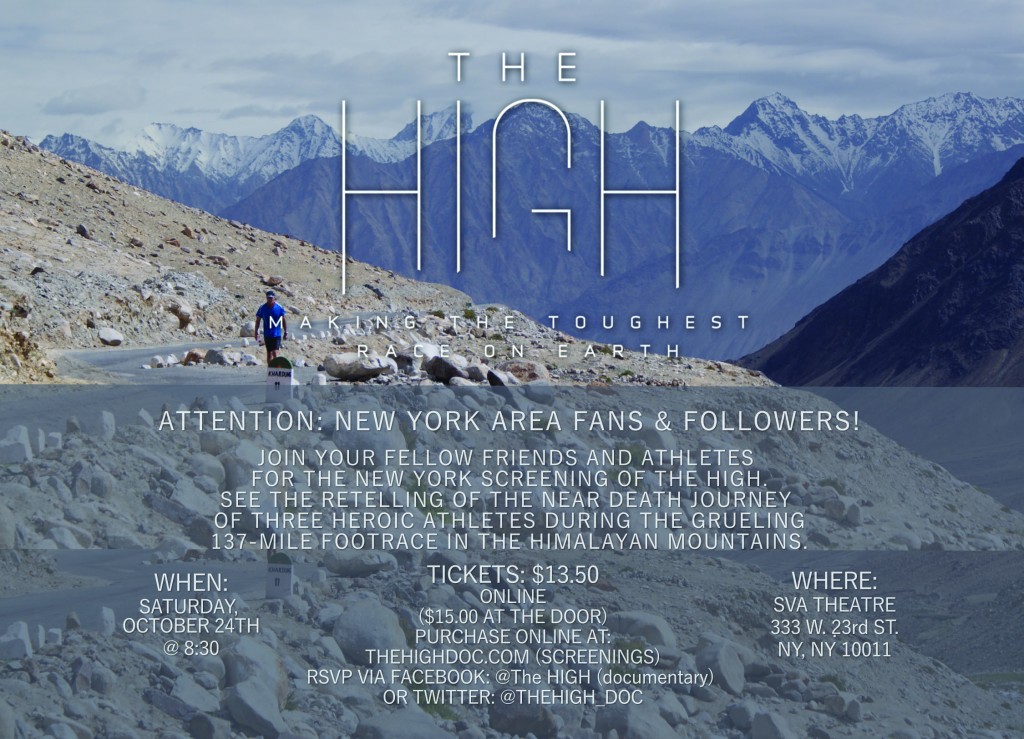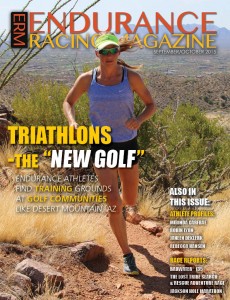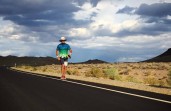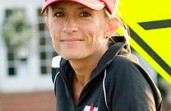Should Snowshoeing Be an Olympic Event?
If Mark Elmore had his way, the answer would be “Yes”. Elmore, the director of the United States Snowshoe Association (USSSA) is driven by his quest to add the sport to the list of events at the Winter Olympics – especially since there is a US Special Olympics Snowshoe Team, which happens to be competing at the 10th Special Olympics World Winter Games in PyeongChang and Gangneung, South Korea, from January 29 – February 5 this year.
“One day, the Olympic Committee will wake up and realize that snowshoe racing is the wave of the future,” said Thomas Schmitt, who manages marketing and public relations for Redfeather Snowshoes, a retailer out of Wisconsin.
The USSSA serves as the lead governing body for the sport of snowshoe racing in the US. As part of that mission, they promote the organizational growth of the sport in accordance with the International Amateur Snowshoe Racing Federation, of which Elmore is a member. Their goal is to achieve recognition by the US Olympic Committee in hopes of gaining status as an Olympic sport.
|
Countries with at least one Snowshoe Organization Andorra |
Curling Paid Its Dues and Became an Olympic Sport
The International Olympic Committee (IOC) has very specific rules and regulations governing decisions over whether a sport will be considered for inclusion in the Olympics. While some scratch their heads as to why a sport like curling was accepted into the Olympics back in 2006, the sport has had a global following since the 1800’s and has followed a series of steps toward acceptance by the IOC…and that acceptance took, if you map it out, many many years. The sport adopted a governing body back in 1838, but it wasn’t until 1957 that it formed an international organization – a requirement for consideration as an Olympic sport. In 1959, Scotland and Canada launched the Scotch Cup series, and other countries (including the US) joined. It wasn’t until 1965 when six countries – Scotland, Canada, USA, Sweden, Norway, and Switzerland – agreed to a proposal to form the International Curling Federation. In 1966, France joined the ICF, and a set of rules for international competition was proposed. Finally, after the ICF changed its name to the World Curling Federation (WCF) in 1982, the IOC in 1983 agreed to include Curling program of the SVIII Olympic Winter Games in 1988.
The WCF continued to develop its governing responsibilities and its Constitution and Management Structure, which included the election of an Executive Board. A formal headquarters was set up, and from there, other international events were born – including the first World Wheelchair Curling Championship in 2002.
Modern Snowshoe History Predates Curling
While the origin and age of snowshoes are not precisely known, it’s guessed they were used between 4,000 and 6,000 years ago. North American indigenous people developed snowshoes prior to the 20th century, and designs changed depending on geography. As European settlers came to the US and Canada, snowshoes were used by fur traders and even in war. In 1757 and 1758, two skirmishes during the French and Indian War (which started in 1754) were fought by British troops wearing snowshoes.
Skip to more modern times where Alaskan and other indigenous tribes participated in the Arctic Winter Games, an international biennial event which was founded in 1969. Starting in the 1950’s, however, snowshoes started to evolve into more of what you see today, morphing into athletic versions that are used by snowshoe athletes both recreational and professional.
Can Snowshoeing Build the Right Audience?
Despite the fact that 4,700 snowshoe enthusiasts converged on Val di Non, Italy, to celebrate the 40th anniversary of the world’s largest snowshoe race, the IOC doesn’t appear impressed. The International Snowshoeing Federation (ISF) boasts 18 countries worldwide and has a three-member board on which the USA, Japan, and Switzerland serve. Mark Elmore is the board member from the United States.
Why the IOC is lingering on adding snowshoeing as a sport is a bit of mystery, since there is a Special Olympics Snowshoe Team. Perhaps the IOC’s disinterest or unwillingness to add snowshoeing as Olympic sport has everything to do with the sport’s organizational inconsistency around the world. Even in the US, Elmore agrees that the organizational status of the USSSA has been both inconsistent and disorganized. Further, while it has been in existence since 1977, the association’s membership has not grown – despite an increase in snowshoe sales and enthusiasts. Headquartered in Corinth, N.Y., the association used to have a local/regional presence before it went national: about 30 years ago it became involved with the Empire State Winter Games. But though the USSSA may be recognized for spearheading interest in competition on the national level, the rules and manner with which the sport is managed from state to state does not follow a set standard.
“There are different races with race directors who are not following a standard set of racing rules,” Elmore said. “Therefore, there is no consistency or continuity with the sport around the nation.”
That inconsistency coupled with limited member benefits can account for the low numbers in membership at the USSSA. According to Wisconsin snowshoe competitor Kevin Tarras, who has competed at Nationals, “Many snowshoers will join the USSSA to compete in the Nationals, but after that, there is little incentive beyond that to maintain membership.”
Tarras and other snowshoers, like Colorado snowshoe athlete Lisa Schrader, say the sport is amazing and offers tons of exercise benefits. “It’s also free to snowshoe,” Schrader said. “That and the fact that the equipment is not expensive makes the sport very attractive.”
Schrader, who has introduced many of her friends to the activity, sees no reason why snowshoeing should not be an Olympic sport. And while others like Tarras agree, the lack of consistency in the sport creates an image of a game that doesn’t have it all together. And, because the IOC is very political and has its own set of standards, the inclusion of snowshoeing as a recognized Olympic sport could be difficult.
The Movement to Influence the IOC
Elmore realizes there is no silver bullet, but he hopes that there is some way to develop continuity in racing regulations. Resources, he mentioned, were an issue, as he and his staff work on a volunteer basis.
But if anyone can pull this together, Elmore can – for his determination, if not for his commitment and experience. In 2001, after being involved with the association for many years, Elmore was asked to be the director of the USSSA. They set a goal of coordinating a US Snowshoe program, with races across the country following common rules, regulations and race protocols. “I was involved with starting the national championship racing program,” he said.
To promote growth in the sport, the USSSA started the national championships (now on its 14th year). The championships will be held in Oregon in 2013. The championships used to be an open race, but now the competition involves coordinating 37 different events in 24 states, where athletes look to actually qualify for Nationals.
The word is getting out about snowshoeing. According to Elmore, the sport is gaining a foothold all over the US, even in states like North Carolina, New Mexico, and Arizona, where you would not expect snowshoeing to be popular.
Globally, the ISF would like to develop a new World Cup series, and stay in front of the IOC.
Looking for Membership
When it comes to the USSSA, Elmore wants to see a growth in membership – but the association needs to demonstrate its value. Aside from the requirement to belong to the association to compete on the national level, the association needs to provide other benefits to its members; and for a tiny association with no budget, that’s tough to do.
Maybe people think we are much bigger than who we are. There are only four of us who manage the association. All of us are volunteers and dont get paid a cent. Usually we end up paying money, actually. This is all for the passion of the sport; we are really a Mom-and-Pop organization, Elmore explained.
Today there are only 500 members in the USSSA. The membership fees help the association participate and manage some races, but the reality is that membership offers little in the way of incentive. Members receive a patch or bin, a membership card, and a subscription to Trail Running Magazine (which covers snowshoeing, but not year-round).
Increasing Value and Joining Forces with Manufacturers
Kevin Tarras, who races in Redfeather snowshoes, loves the sport and would welcome a growth in the number of people who participate. He suggested that in working with local running stores, maybe the USSSA could give seminars on snowshoeing to generate interest.
While that is a good idea, another issue remains: snowshoes are not carried in running or cycling stores generally. Craig Brooks of Northern Lites said that their goal in 2013 is to get more of their product into stores. Currently, they partner with a few cycling stores who are willing to carry the snowshoes.
The USA Special Olympics Snowshoe Team, however, is alive and kicking.
Helping Hands from Sports Manufacturers
Flagstaff, Ariz., is the headquarters for snowshoe manufacturer Kahtoola. The company sponsors national championship competitor Jared Scott, who competed in the World Snowshoe Competition in Italy on January 6, 2013, placing 16th and top American.











